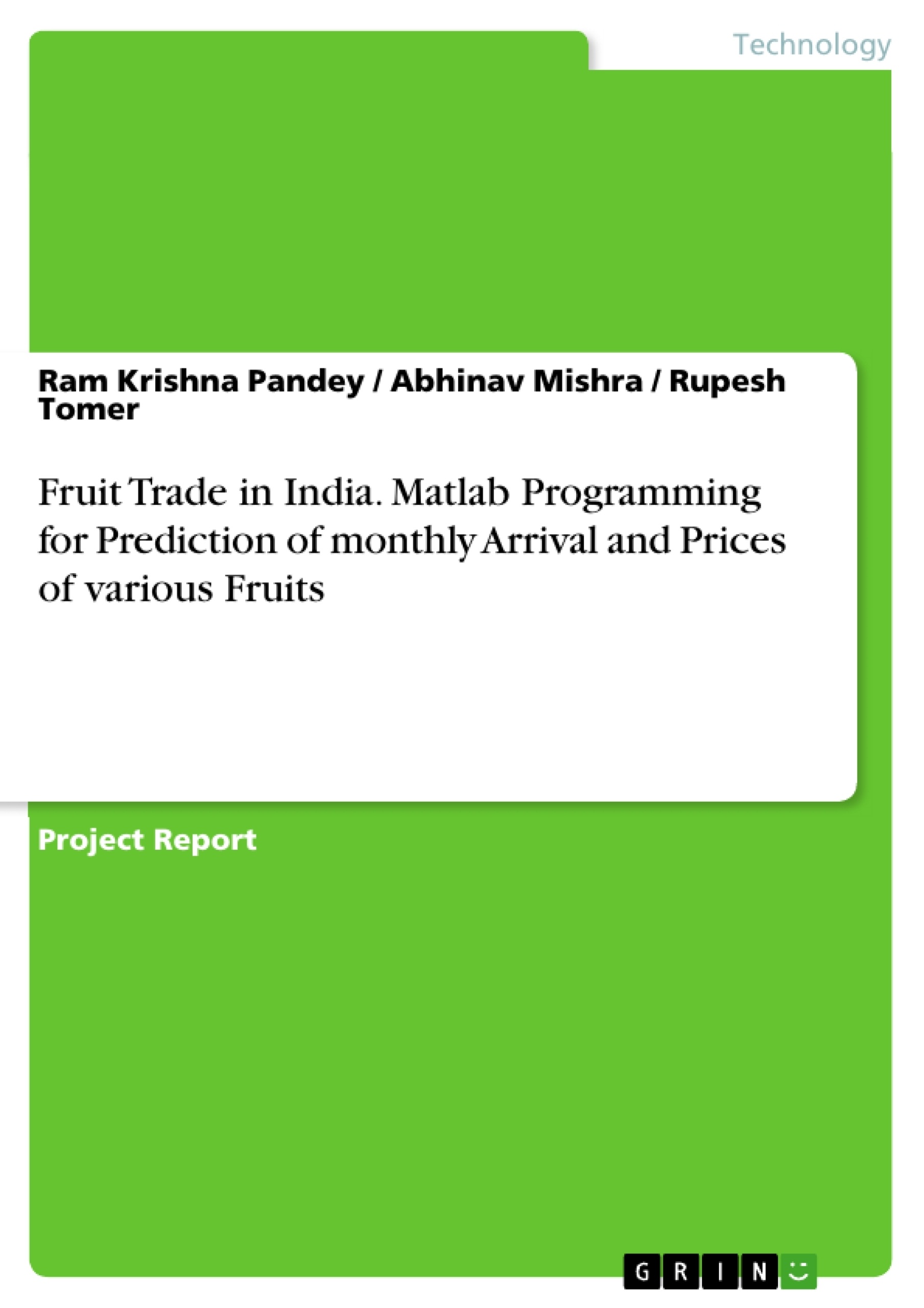In this study an attempt was made to analyse the fruit arrival and price patterns in a wholesale fruit market (Haldwani Mandi) for trend and seasonality in order to develop forecasting models for the fruit arrival process so as to rationalize an important input to fruit mandi system design. Historical time series data on monthly arrivals and average monthly prices was collected from the Haldwani mandi records for the period January, 1990 to April, 2009. Arrivals and prices of five fruits (Mango, Banana, Apple, Peach and Orange) were considered. A program in MATLAB 7.0 was developed for trend and seasonal analysis. For forecasting, these trend models were extended and seasonal index were applied for each month. Forecasting models were developed on the basis of first 204 months (January 1990 to December 2006) data using time series analysis technique. Forecasts were generated for the next 36 months (January 2007 to December 2009). These forecasts were compared with the actual arrivals for January 2007 to April 2009. Results of the present investigation have shown that arrival of Apple was observed in the month of July, Banana arrived maximum in October, whereas Mango, Orange and Peach recorded maximum arrival in the months of July, April and May respectively. Seasonal indices corresponding to these peak arrivals were 626.66, 136.29, 876.06, 371.17 and 439.89 respectively. In the case of Apple, arrivals and prices were inversely correlated; i.e., prices were low during peak arrival. However, in the case of banana, there was very little correlation; one major reason for this seems to be that the prices of Banana did not vary throughout the year. There was a increasing trend in the case of prices. In the trend analysis, it was observed that the arrival of Apple and Orange had a decreasing trend for the years under analysis, whereas Mango and Banana had an increasing trend for this period. The monthly arrival of Peach almost remained the same. Future forecasts were developed for the monthly arrival and average monthly prices of these selected commodities. Maximum error for each forecast was calculated on the basis of peak arrival/ prices in a year and maximum error was obtained as 26.89% in forecasting the arrival of Apple.
Inhaltsverzeichnis (Table of Contents)
- Introduction
- Review of Literature
- Materials and Methods
- Haldwani Mandi and its Operations
- Data Collection
- Data Analysis
- Programming for computation of trend
- Programming for computation of seasonal variations
- Results and Discussion
- Trend Analysis
- Seasonal variations in arrivals and prices
- Future Forecasts
- Summary and Conclusions
- References
Zielsetzung und Themenschwerpunkte (Objectives and Key Themes)
This study aims to analyze fruit arrival and price patterns in the Haldwani Mandi, India, using historical data. The objective is to develop a MATLAB program for time series modeling to describe the time-dependent structure of fruit arrival and price series and subsequently use these models to predict monthly arrival and average monthly price values.
- Time series analysis of fruit arrival and price patterns
- Development of a MATLAB program for time series modeling
- Prediction of monthly fruit arrival and average monthly prices
- Application of time series analysis techniques to fruit trade in India
- Understanding the time-dependent structure of fruit arrival and price series
Zusammenfassung der Kapitel (Chapter Summaries)
The introduction provides context for the study, highlighting the importance of fruit Mandies in India's post-production system and the need for forecasting fruit arrival patterns. The review of literature discusses various approaches to forecasting, including classical econometric and time series methods, and provides examples of previous research on market trends and price analysis. The materials and methods section details the data collection process, the use of Haldwani Mandi as a case study, and the specific methodologies employed, including MATLAB programming for time series modeling. The results and discussion section presents the findings of the analysis, including trend analysis, seasonal variations, and future forecasts. The final chapter, "Summary and Conclusions," summarizes the key findings and contributions of the study, emphasizing the potential of time series analysis for improving fruit trade efficiency and planning in India.
Schlüsselwörter (Keywords)
Fruit trade, India, Haldwani Mandi, time series analysis, MATLAB, fruit arrival, price prediction, seasonal variations, trend analysis, forecasting, post-harvest system, market integration.
- Quote paper
- Ram Krishna Pandey (Author), Abhinav Mishra (Author), Rupesh Tomer (Author), 2009, Fruit Trade in India. Matlab Programming for Prediction of monthly Arrival and Prices of various Fruits, Munich, GRIN Verlag, https://www.grin.com/document/295348



